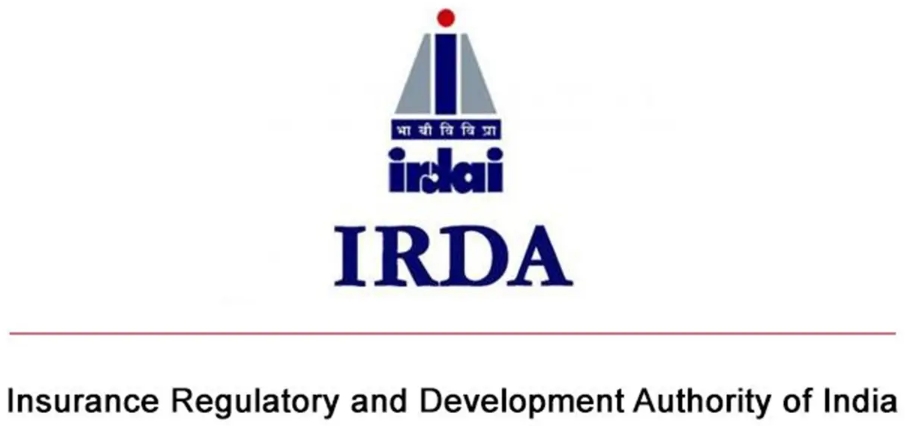In our contemporary landscape, we inhabit a VUCA environment, denoting volatility, uncertainty, complexity, and ambiguity. This dynamic affects all industries, leaving none untouched by its inherent uncertainties.
Constantly exploring novel approaches is essential to unlock an organization’s potential for enduring and prospering in this ever-evolving landscape. The insurance sector, like all others, is not exempt from the challenges posed by the VUCA world and must consistently evolve and embrace transformations.
Historically, the insurance sector has adhered to conventional business models heavily reliant on manual procedures. Despite the resilience of this model, the insurance industry is presently undergoing a significant and transformative shift. This metamorphosis is chiefly driven by technological progress, with a strong emphasis on augmenting the customer experience at every interaction point.
Drawing on their extensive industry knowledge and embracing the era of cutting-edge innovations, insurance firms are now offering customers tailored and adaptable product solutions along with associated services.
Traditionally, insurance has relied on interpersonal interactions for sales, but the digital era has ushered in a hybrid paradigm known as the ‘phygital’ model.
Fundamental and essential insurance procedures such as policy issuance, claim settlement, pre-medical check-ups, and others, which were historically reliant on paper, are undergoing a transformation through digital integration. This shift aims to deliver a smooth customer experience and enhance process efficiency. Within the insurance realm, this has proven transformative in reshaping the customer journey.
Key technologies like machine learning, artificial intelligence, automation, and data analytics have played pivotal roles in the digitization of insurance processes.
By harnessing AI-driven chatbots and virtual assistants, insurance companies are swiftly delivering tailored customer support, particularly in areas like claim management, renewal processes, and addressing customer concerns.
AI algorithms, in conjunction with machine learning models, are revolutionizing the crucial underwriting process within the insurance industry. This advancement enhances efficiency and precision, empowering insurers to customize products according to each customer’s risk profile.
Process automation is revolutionizing how manual tasks such as policy issuance, claims processing, and query resolution are handled in real-time. This not only offers customers a seamless experience but also boosts productivity and operational efficiency.
The digitization of insurance processes has been significantly driven by technologies such as machine learning, artificial intelligence, automation, and data analytics.
Insurance companies are swiftly delivering tailored customer service, particularly in areas like claim management, renewal processes, and addressing customer grievances, through AI-powered chatbots and virtual assistance.
The utilization of AI algorithms alongside machine learning models is enhancing the efficiency and accuracy of underwriting, a pivotal process within the insurance sector. This innovation empowers insurers to customize products according to each customer’s risk profile.
Through process automation, tasks such as policy issuance, claims processing, and query resolutions are now being managed in real-time. This not only provides customers with a seamless experience but also boosts productivity and operational efficiency.
From a strategic perspective, advanced analytics and AI have played a significant role in fostering data-driven decision-making and driving product innovation. This, in turn, contributes to a broader shift towards customer-centric practices.
Collaborative Environment: Initiatives for Accessibility
Achieving widespread coverage requires a cohesive partnership involving the government, regulatory authorities, insurance firms, insurtech/fintech companies, and external entities, all propelled by technological advancements. Regulatory bodies and governing institutions are intensifying their efforts to align with the digital revolution, aiming to extend insurance offerings to even the remotest corners of the nation.
Efforts such as Bima Sugam and ABHA represent strides in the direction of making insurance and associated services universally reachable, guaranteeing comprehensive coverage for all. ABHA (Ayushman Bharat Health Account) is a technological empowerment endeavor aimed at extending health insurance to every corner of the nation.
ABHA lays the foundation for introducing a health claim exchange, unifying the entire healthcare ecosystem encompassing hospitals, insurers, healthcare service providers, and TPAs, onto a single platform. This integration facilitates smooth information and data exchange, thereby reducing claim processing time, minimizing fraud, and introducing consistency. The overall process becomes digitized and streamlined, eliminating complexities.
Likewise, a dynamic partnership has been established with IIB (Insurance Information Bureau), a data repository and analytical entity for the Indian insurance sector. This collaboration holds the potential to address challenges like under-penetration, NCB leakages, and fraudulent claims.

IRDAI is actively devising innovative approaches to elevate customer experiences by introducing fully cashless claim settlements via shared empanelment and hospital interoperability. This initiative not only advantages the insurance sector but also propels the nation towards achieving substantial growth in insurance penetration.
Harnessing cutting-edge technologies through stakeholder integration will facilitate the identification of anomalies, patterns, and suspicious activities, effectively aiding in fraud detection and prevention. This approach will also lay the groundwork for comprehensive risk assessment models, enabling a more precise grasp of risk and, in turn, precise risk underwriting. This fosters innovation and customization in product offerings, optimal pricing strategies, and centralized information sharing, ultimately enhancing precision and efficiency. Consequently, these improvements will translate into better customer service.
Making Insurance Inclusive: Bridging the Insurance Gap
When envisioning the insurance industry 2.0, many tend to focus solely on technology’s role in enhancing the customer experience. However, what about individuals who exist outside the insurance ecosystem? Insurance industry 2.0 transcends technological progress, aiming to ensure insurance is inclusive, attainable, and accessible to every household across the nation. It’s fundamentally about extending coverage!
Throughout history, insurance accessibility has predominantly been confined to major towns and cities, exerting a relatively lesser influence on tier 2 and tier 3 locations. This discrepancy can be attributed to insufficient awareness, a restricted distribution network, and inadequate infrastructure for claims servicing. It’s an acknowledged reality that insurance penetration remains relatively low in India, leaving many individuals without sufficient coverage.
This situation arises from insufficient awareness, a restricted distribution network, and inadequate infrastructure for claims processing. It’s an acknowledged reality that insurance penetration in India remains relatively low, leaving many individuals without sufficient coverage.
Non-life insurance penetration in India hovers at just under 1%, a considerable contrast to the industry average of around 4%. This wide protection gap demands immediate attention from insurance companies.
Closing this gap is within reach, especially considering the enhanced digital infrastructure and the growing prevalence of mobile connectivity. These factors will contribute to heightened awareness about insurance. By offering the appropriate products, services, and efficient distribution systems, we can effectively reach previously untapped segments.
Venturing into the tier 2 and tier 3 areas of our nation is essential to ensure coverage for every household. By providing digital tools to physical offices in these locations, we can effectively address the insurance requirements of the population.
An innovation, the Virtual Sales Offices, pioneered by Bajaj Allianz, is already breaking down geographical boundaries. Through this approach, insurance company staff members operate as “one-man-offices,” extending their reach to remote areas and assisting people with their insurance inquiries and needs.
Initiatives such as Bima Sugam, a unified online marketplace designed to streamline the sales, servicing, and claims management of insurance policies within a single platform, are poised to deliver customer-centric products and elevate convenience for policyholders.
Furthermore, initiatives like Bima Vahak and Bima Vistaar will play a pivotal role in establishing the final link for insurers, enhancing the reach, accessibility, and insurance penetration in every corner of the nation. These endeavors will also contribute to employment generation within these areas, contributing to both financial protection and economic advancement.
Equally vital is ensuring that the quality of service matches the need. Expanding the network of hospital affiliations, motor garage partnerships, and similar arrangements throughout the country will enhance the service reach. Leveraging the widespread bank branch network through Bancassurance enables us to access tier 2 and tier 3 regions, offering products and services.
Similarly to the banking sector, which utilizes banking correspondents to reach underserved areas, the insurance industry can adopt a similar business model by partnering with point-of-sale (POS) retailers to offer insurance services to untapped markets across the nation. This approach will contribute to enhanced financial inclusion.
The Common Service Centres (CSC) will play a pivotal role in service delivery, significantly expanding the service coverage of the insurance industry. This initiative will elevate the customer experience at every interaction and contribute to employment generation, particularly in rural India, thereby bolstering the economy.
What does the future hold?

Insurance 2.0 embodies the continuous evolution and reimagining of our offerings to deliver improved products and services, ensuring accessibility for all in the ever-shifting insurance landscape. As the dynamics of the insurance industry continue to evolve, what lies ahead?
As new-age technologies reshape various industries, the integration of these innovations into the system to streamline the insurance life cycle is inevitable. The rapid adoption of conversational AI across the globe can similarly transform our insurance industry, facilitating interactive human-like dialogues to handle customer inquiries, guide policy purchases, and aid in claim notifications, ultimately simplifying the insurance process.
Predictive analytics will assume a vital role in underwriting risks precisely by forecasting potential risks and event probabilities. Blockchain technology offers a secure avenue for transactions, policy management, and claim settlements. Beyond technological advancements, the integration of smartphones and the development of collaborative ecosystems will significantly shape the future of the insurance industry.
In a society increasingly attuned to awareness, individuals are seeking an array of inventive protection-focused products and alternatives. However, this abundance of choices remains limited. India currently houses around 60 insurance companies, over 25 of which are in the realm of general insurance, serving the vast population of the nation.
However, a greater influx of insurers is essential in the market—more participants mean more benefits! Increased competition will foster improved product innovations, elevated customer service, broader coverage, and specialization in distinct areas. This environment will set the stage for robust, adaptable companies to thrive and offer customers a plethora of choices.
This initiative will propel insurance penetration throughout India, guaranteeing financial security for every household in times of unforeseen challenges and affording them the chance to lead a life of dignity. The realization of the IRDAI’s vision of ‘Insurance for All’ by 2047 is swiftly approaching. This journey will commence with raising awareness; each of us must shoulder the responsibility and ignite discussions about insurance.
Moreover, the fusion of technological progress and human expertise will guarantee products and services that prioritize the customer, resulting in heightened customer satisfaction and a competitive advantage for insurance companies.
Through a balanced blend of tangible strategies, existing technologies, and industry-wide cooperation, combined with the integration of cutting-edge innovations, the resilient insurance sector stands poised to meet customer demands and contribute to enhancing the nation’s financial stability in the transition toward a new era.





